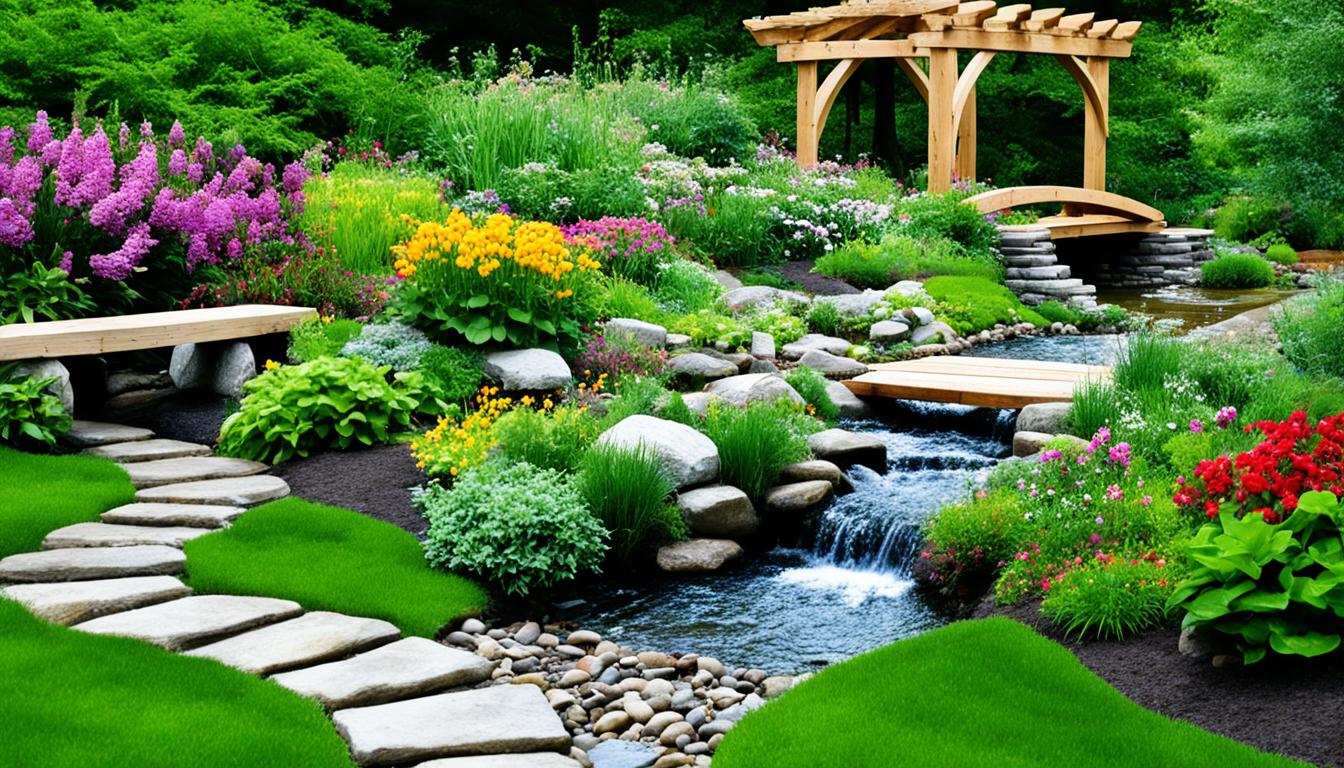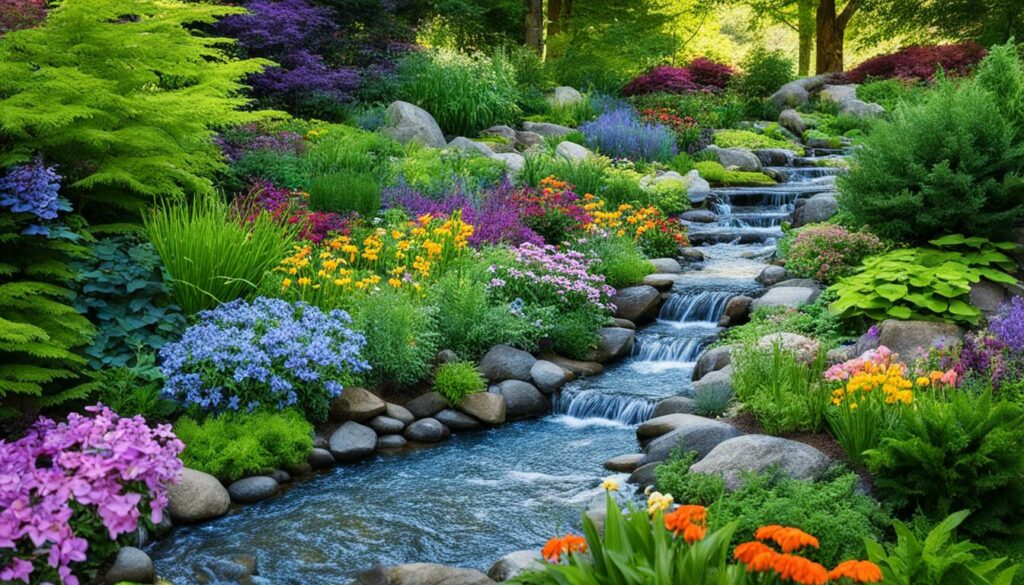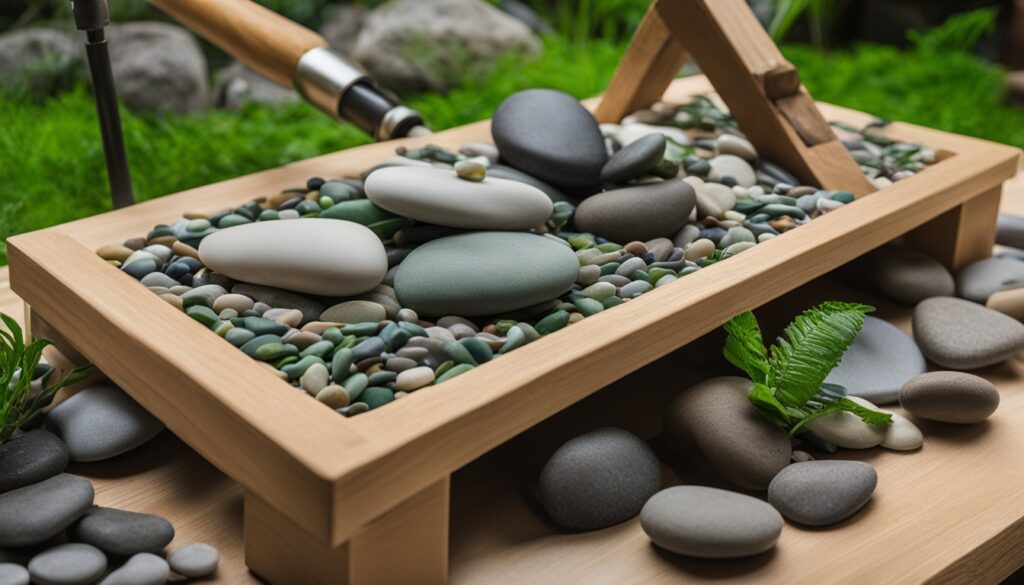
Creating a DIY stream can be a fulfilling and enjoyable project that transforms your outdoor space into a serene oasis. These homemade streams not only beautify your garden but also introduce a calming soundscape that helps foster a deeper connection with nature. Whether you are considering small DIY landscape streams or larger garden streams, constructing your own water feature is an accessible way to enhance your environment. In this article, we will explore the essential aspects of planning and building your DIY streams, ensuring you can create a tranquil retreat right in your backyard.
Introduction to DIY Streams
DIY streams have become increasingly popular among garden enthusiasts. These projects provide an excellent opportunity for homeowners to create unique landscapes while enhancing the natural beauty of their gardens. A DIY stream can vary from a simple, gently flowing water pathway to intricate designs featuring waterfalls and pools.
Engaging in DIY stream projects allows you to personalize your outdoor space. Adding such features contributes to local biodiversity by attracting various species of wildlife. It creates an inviting environment not only for homeowners but also for frogs, birds, and beneficial insects.
To successfully embark on your DIY streams, comprehending the fundamental principles of water flow is essential. Understanding elevation and how water travels through your garden will help ensure your projects thrive. By beginning with clear planning and knowledge, even beginners can create stunning streams that become the focal point of their gardens.
Benefits of Adding Garden Streams
Integrating garden streams into your outdoor space offers numerous advantages that enhance both aesthetics and ecology. One notable benefit of garden streams is their ability to attract wildlife. Birds, frogs, and even beneficial insects thrive around these water features, contributing to a balanced ecosystem.
The soothing sound of flowing water creates a tranquil atmosphere, ideal for relaxation and stress relief. Visitors often find themselves drawn to this peaceful environment, making it a perfect spot for reflection or gathering with friends and family.
Beyond the calming effects, garden streams introduce dynamic visual elements to your landscape. They can effectively break up the monotony of traditional landscaping, bringing seasonal changes that captivate onlookers.

Investing time and resources into DIY landscape features like these can also enhance your property's value. Landscaped gardens that incorporate water elements are frequently viewed as more desirable, appealing to potential buyers when it's time to sell.
In summary, the myriad benefits of garden streams highlight their significance in creating enriching outdoor experiences while also elevating your landscape's overall appeal.
Planning Your DIY Stream Project
Effective planning is essential when embarking on DIY stream projects. Selecting the ideal stream location lays the groundwork for a successful and visually appealing water feature. Consider the natural terrain and how the stream interacts with existing elements in your garden. Understanding where to place the stream and mapping out its design can significantly enhance both the aesthetic and ecological aspects of your landscape.
Choosing the Right Location
Identifying the perfect stream location involves several key considerations. Factors such as natural gradients and sunlight exposure play vital roles in ensuring proper water flow and health for the surrounding flora. Evaluate the following points to determine the best spot for your stream:
- Assess the slope of the land, allowing for gravity to aid water movement.
- Choose an area receiving adequate sunlight to promote algae balance and plant growth.
- Keep the stream away from large trees to avoid excessive leaf fall, which can clog the water feature.
- Consider proximity to existing plants and structures, as harmony with the garden enhances the overall landscape.
Designing Your Stream Layout
After selecting a suitable stream location, focus shifts to stream design. A well-considered stream design enriches the aesthetic appeal of your garden, allowing for creativity in laying out the stream's path. When planning DIY streams, aim for a natural look by incorporating curves, turns, and varying depths:
- Map out the intended path, ensuring it flows naturally and integrates well with surrounding elements.
- Create bends and turns for visual interest and to mimic the organic movement of a natural stream.
- Vary widths and depths, which enhances the beauty and ecological value of the water feature.
- Incorporate stones and natural materials to support the stream's structure and appearance.
Essential Materials for DIY Stream Projects
Creating a stunning DIY stream requires careful consideration of essential materials. Selecting the right items will ensure your water feature is both functional and visually appealing. Understanding the role of pond liners, stream pumps, rocks, and stones in your project will help you achieve the desired outcome.
Pond Liners and Pumps
Pond liners are crucial in any DIY stream project. They prevent water loss and help maintain a stable ecosystem within your garden feature. When choosing your pond liner, make sure it has sufficient overlap at the seams to reduce the risk of leaks. High-quality materials will offer long-lasting durability.
Along with pond liners, selecting the appropriate stream pump is essential. The pump's capabilities should align with the desired flow rate for your stream. Determine the gallons per hour (GPH) necessary for optimal performance, as this will influence the overall dynamics of your water feature. A powerful submersible pump from reputable brands such as Aquascape or OASE can significantly enhance your stream's flow.
Rocks and Stones
Utilizing rocks and stones in your DIY stream project not only enhances its aesthetic appeal but also contributes to its functionality. Incorporate a variety of sizes and types to create a more natural appearance. Positioning larger boulders strategically can form stunning waterfalls and dams, adding both visual and auditory elements to your garden.
When selecting rocks, consider local sources to keep costs down and promote a cohesive look with your existing landscaping. Combining different textures and colors will further enrich the overall design, making the stream a focal point in your garden.

Step-by-Step Guide to Building Your DIY Stream
Creating a beautiful DIY stream involves several essential steps. This guide will walk you through the process of building garden streams, focusing on excavation, installation, and design features. Each part contributes to a functional and attractive water feature that enhances your outdoor space.
Excavation and Initial Setup
Begin by marking the stream's intended path. Use stakes and string to outline your design, ensuring that it flows naturally through your garden. The first step in stream construction involves excavation. Carefully dig out the streambed to the desired depth, keeping the sides sloped for stability. This grading helps maintain proper water flow, ensuring an efficient DIY stream installation.
Installing the Pump and Liner
With the excavation complete, the next phase focuses on installing the pump and liner. Choose a pond liner that fits the dimensions of your streambed. Carefully position the liner at the bottom of the stream. Place the pump at the lowest point to maximize water circulation. Connect the pump to a power source and check for leaks around the liner. Proper installation is critical to the functionality of your stream.
Creating Waterfalls and Dams
Waterfalls and dams add a dynamic element to your stream while enhancing its aesthetic appeal. Use rocks and stones to build up areas for waterfalls, allowing the water to cascade down beautifully. Dams can help regulate water levels and create calm pools. These features are vital in achieving an engaging and tranquil atmosphere as part of your building garden streams project.
Enhancing Your Stream with Landscaping Features
To truly elevate the charm of your garden stream, incorporating thoughtful landscaping features is essential. Using native aquatic plants can enhance the visual appeal of your stream, improve water quality, and create essential habitats for local wildlife. Selecting the right plants for your specific regional climate can make all the difference; consider adding water lilies for stunning blooms or ferns for delicate greenery. These plants not only beautify the area but also promote biodiversity.
Natural Plants and Flora
Choosing the right aquatic plants is crucial for successful stream landscaping features. Plants like cattails and arrowhead not only add texture and color to your garden stream but also serve as natural filters for pond water. This creates a healthier ecosystem in your stream while attracting beneficial insects and small animals, enhancing the vibrant atmosphere of your garden.
Lighting Ideas for Your Garden Stream
Effective garden stream lighting can transform the area's ambiance as dusk falls. Consider installing subtle underwater lights to highlight the beauty of your plants and create shimmering reflections on the water's surface. Alternatively, string lights or solar-powered lanterns along the banks can create a warm and inviting space for evening gatherings. With the right lighting, your stream becomes a captivating focal point, enhancing the overall serenity and beauty of your outdoor environment.








